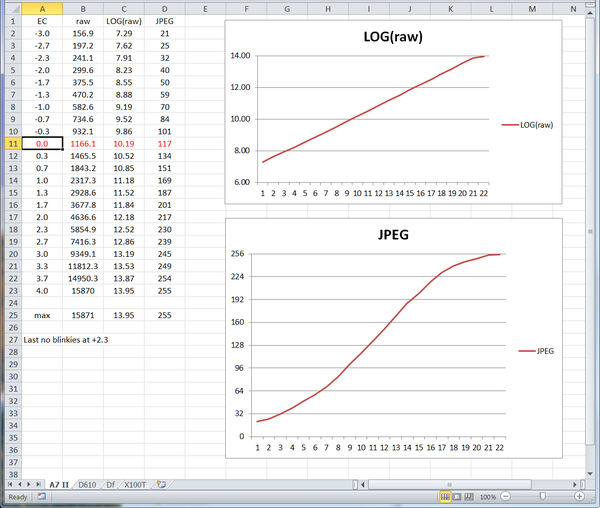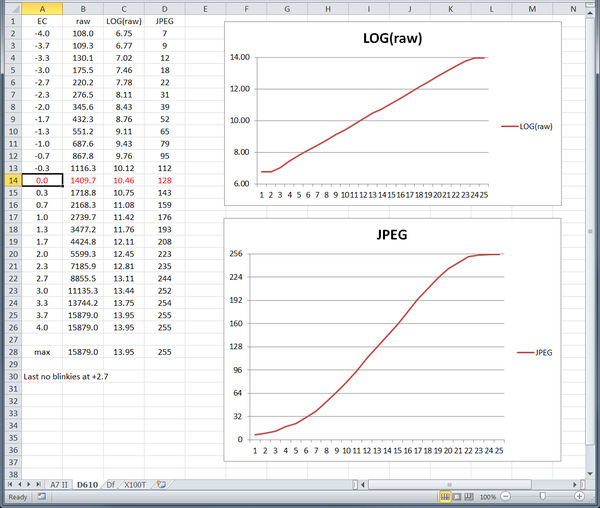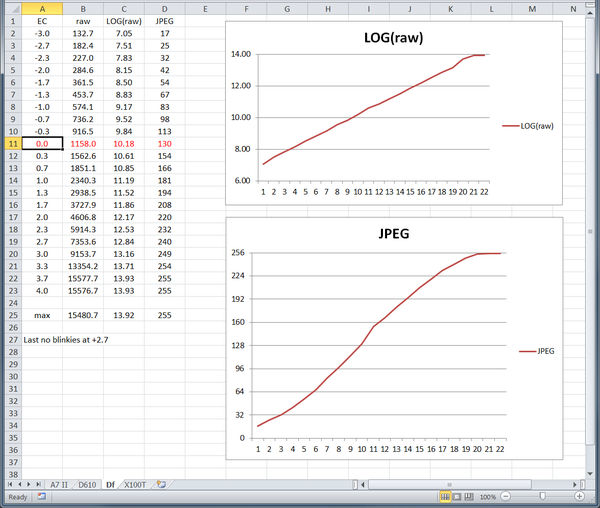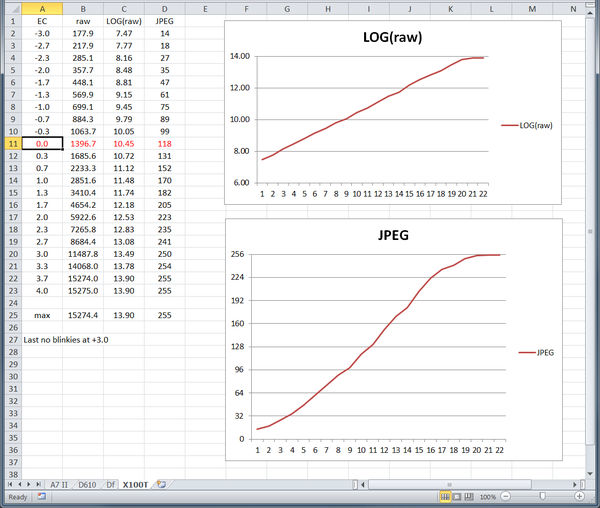Experiment: The best exposure is the one that produces a correct starting image..
Apr 28, 2020 07:14:29 #
Scott!
My Df is not the same as yours. I got 1430 on the green channel which is about 1/3 stop brighter than yours. I think the variations you saw among cameras are more likely the variations among samples.
Another thing is that you shot all those cameras on auto that is the exposures were based on the camera's meter. Do you notice a differences between the camera meters?
My Df is not the same as yours. I got 1430 on the green channel which is about 1/3 stop brighter than yours. I think the variations you saw among cameras are more likely the variations among samples.
Another thing is that you shot all those cameras on auto that is the exposures were based on the camera's meter. Do you notice a differences between the camera meters?
Apr 28, 2020 07:29:54 #
BebuLamar wrote:
Scott!
My Df is not the same as yours. I got 1430 on the green channel which is about 1/3 stop brighter than yours. I think the variations you saw among cameras are more likely the variations among samples.
Another thing is that you shot all those cameras on auto that is the exposures were based on the camera's meter. Do you notice a differences between the camera meters?
My Df is not the same as yours. I got 1430 on the green channel which is about 1/3 stop brighter than yours. I think the variations you saw among cameras are more likely the variations among samples.
Another thing is that you shot all those cameras on auto that is the exposures were based on the camera's meter. Do you notice a differences between the camera meters?
The camera meters will behave differently but they all usually agree within about a 1/3 stop range when using the spot meter. The camera's meter even overcomes variations in lens T-stops. I assume it can vary slightly from camera to camera, even with the same model.
Where they really diverge is with average, center weighted, matrix or evaluative metering - whatever they call it. Each model does it a little differently.
But the big unknown is the precision of the lens's aperture, the shutter's actual vs. designated speed and the way that the ISO gain is applied to the signal recorded in the sensor as it is converted to a digital record in the raw file.
Apr 28, 2020 09:44:36 #
Here is some more information to illustrate the difference between the raw file values and the camera's JPEG values. Note that the EC+0.0 row shows where the camera puts the raw value for middle gray and the corresponding JPEG middle gray value.
You can also see that the raw value lines are straight while the JPEG characteristic curves follow what we see with film H&D plots.
The plots for the X100T are a little ragged because it uses a leaf shutter which is less precise than the focal plane shutters used by the other three cameras.
You can also see that the raw value lines are straight while the JPEG characteristic curves follow what we see with film H&D plots.
The plots for the X100T are a little ragged because it uses a leaf shutter which is less precise than the focal plane shutters used by the other three cameras.
May 8, 2020 04:25:51 #
Scotty ,
“ ETTR is not about the right end of your camera's JPEG histogram. It's about the right end of the raw file's histogram.”
That quote is proof positive that the writings of Reichsmann, Fraser, and Schewe, have gone right over your head, And that you’ve no comprehension that the right end of the raw histogram has is a wondrous moveable feast, the groaning board of which, laden with various amounts of ERADR , varies among sensor’s of different cameras ...even among those of the same maker and model.
“ ETTR is not about the right end of your camera's JPEG histogram. It's about the right end of the raw file's histogram.”
That quote is proof positive that the writings of Reichsmann, Fraser, and Schewe, have gone right over your head, And that you’ve no comprehension that the right end of the raw histogram has is a wondrous moveable feast, the groaning board of which, laden with various amounts of ERADR , varies among sensor’s of different cameras ...even among those of the same maker and model.
May 8, 2020 05:07:54 #
Uuglypher wrote:
Scotty , br “ ETTR is not about the right end of y... (show quote)
ETTR was developed as a workaround for the lack of dynamic range in 12-bit sensors seventeen years ago.
Your understanding of ETTR is based on only the camera's JPEG histograms. It is totally out of date. The world has moved on. You have not kept up.
ERADR is a term you invented. Nobody else uses it. You are referring to the distance from the right end of the JPEG histogram to the right end of the raw histogram. But if you don't know where right the end of the raw histogram is located you will never understand how to measure it. You are just guessing.
Your refusal to look at the raw histograms with RawDigger is proof that your mind is closed. You will forever remain blissfuly ignorant.
You clearly don't know what you are talking about.
Jun 2, 2020 16:34:04 #
User ID wrote:
No. You get your “as intended” from PP and NOT nec... (show quote)
Right, but you do need pp, as the camera (any camera) is not able to show a scene exactly as it is/was - as it is seen by the photographer. Our eyes do show us an already process image in a way a camera can't. You might be able to come somewhat close, but to really show the image as you have seen it, one needs to do all sorts of post processing afterwards. An sooc image is just an abstraction of the real thing!
Jun 2, 2020 19:15:48 #
selmslie wrote:
I think everyone understands that. br br Adams ma... (show quote)
Thaz cuz there’s only 10 types of people on this earth: Those who can read binary, and those who cannot.
(Some are in one camp, and all the rest in the other.)
If you want to reply, then register here. Registration is free and your account is created instantly, so you can post right away.






